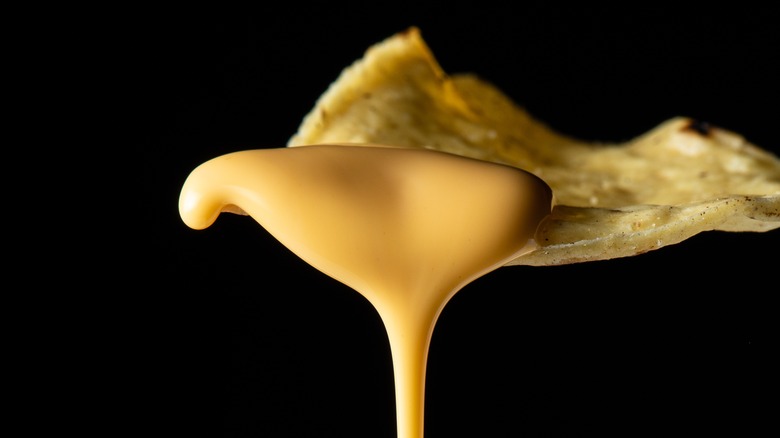You've Probably Never Noticed This Quirky Fact About Sodium Citrate
For some people, few things are more satisfying than drizzling a generous ration of melty cheese over a mountain of crispy nachos. The modern-day ballpark staple was originally whipped up in 1943 at a restaurant in Piedras Negras, Mexico, when the maître d', a man named Ignacio "Nacho" Anaya, improvised a quick late-night dish for a group of hungry women, the Sun-Sentinel reports. Hurriedly gathering whatever he could find in the kitchen, he popped a plate of tortilla chips topped with shredded cheese and jalapeño slices in the oven, and nachos were born. While the original recipe hasn't changed much over the past eight decades, some people now choose to add a variety of other toppings.
Nacho cheese is designed to be creamy so it can be poured — or pumped — over tortilla chips and other indulgences. But what is nacho cheese, anyway? According to Peggy Armstrong from the International Dairy Foods Association, nacho cheese is, perhaps surprising to some, not an official type of cheese (via Food & Wine). Instead, it's a food that is made with cheese, and brands that sell nacho cheese-flavored products all boast their own unique recipes.
In any case, many recipes for the creamy nacho cheese beloved by many contain a similar ingredient with a chemical makeup that can be quite perplexing. If you ever took a chemistry class in school, get ready to take a quick trip down memory lane. (It'll be fun this time. Promise!)
Nacho cheese's secret ingredient has a hidden message
Chemistry can be rather fascinating. For those who may not recall, a molecular formula is an expression that indicates the types and numbers of atoms present in a single molecule of a substance (per Lumen). Some simpler molecular formulas, like H2O (water) and CO2 (carbon dioxide), are widely recognizable. Others, of course, are way more complex and may cause plenty of headaches, especially when exams require some memorization and challenging calculations. But there is at least one molecular formula that is, albeit complex, hilariously coincidental.
Back to our original topic of nacho cheese. The golden-yellow, smooth, liquified queso that drenches nachos often contains an ingredient called sodium citrate. Also known as citrus salt, it is commonly used as a preservative and melting agent in cheese sauces, according to ChefSteps. And now, for the coolest part of this lesson: The molecular formula for sodium citrate is Na3C6H5O7. Notice that, when you remove the numbers, the elements' symbols spell out — you guessed it — nacho.
See? Science is awesome!

